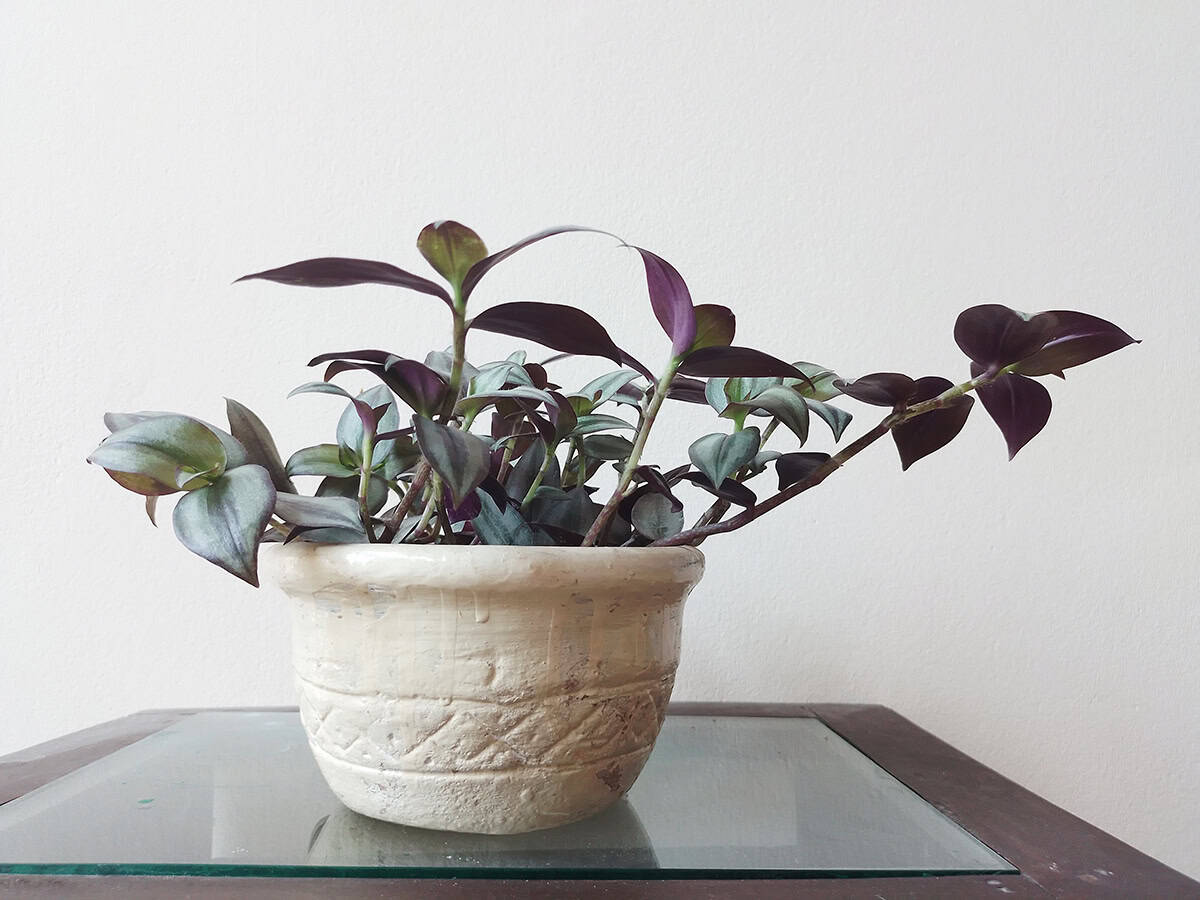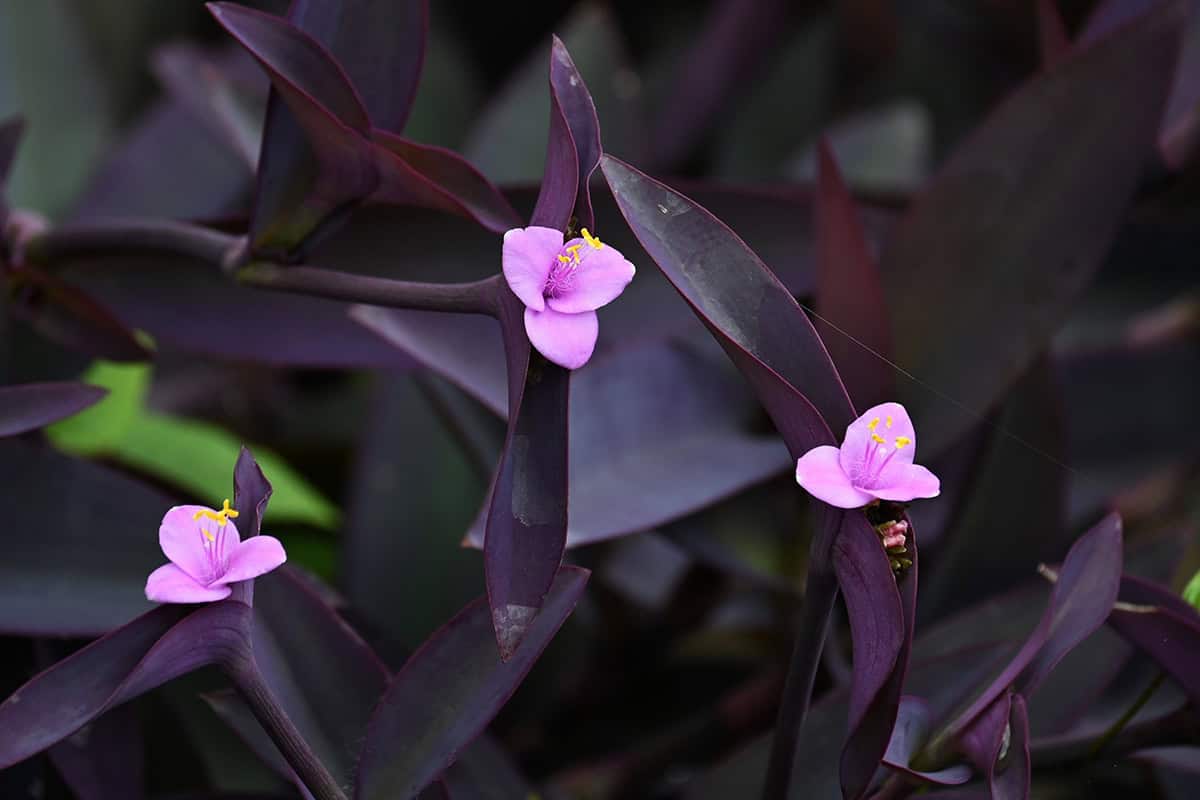You recently added a vibrant Purple Heart plant to your collection, its striking purple leaves instantly elevating your space. Now, you’re eager to keep it thriving and looking its best. Discover the essential care tips for your Purple Heart plant to make a lush and colorful highlight in your home.
| Common Name | Purple Heart |
| Botanical Name | Tradescantia pallida |
| Family | Commelinaceae |
| History & Origin | Native to Mexico |
| Plant Type | Perennial groundcover |
| Mature Size | 1-1.5 feet tall, 1-2 feet wide |
| Sun Exposure | Full sun to partial shade |
| Soil Type | Well-draining, sandy or loamy soil |
| Soil pH | 6.0-8.0 |
| Temperature | 60-80°F |
| Watering | Moderate; allow top inch to dry out |
| Fertilizing | Monthly during growing season |
| Bloom Time | Summer |
| Flower Color | Pink, purple |
| Hardiness Zone | 7-11 USDA |
| Toxicity | Mildly toxic to pets if ingested |
| Common Problems | Root rot, pests like spider mites |
Table of Contents
Light
Purple Heart plants thrive in bright light. Full sun brings out the best purple color in the leaves. They can tolerate partial shade but may turn greenish.
Position your Purple Heart near a window with direct sunlight for several hours each day. In low-light conditions, you might notice fewer blooms and less vibrant foliage.
If growing indoors, consider supplementing with artificial grow lights. Ensure consistent lighting to maintain the plant’s striking appearance. Periodically rotate the plant to ensure even light exposure.
For outdoor planting, choose a place where the plant gets morning sunlight and some afternoon shade. This helps prevent scorching and maintains leaf color.
Soil

A Purple Heart plant thrives in well-draining soil. Opt for a mixture rich in organic matter to ensure your plant remains healthy.
Look for soil with good aeration. This will help the roots get enough oxygen. Adding perlite or sand can improve drainage.
Avoid using soil that retains too much moisture. The Purple Heart plant is susceptible to root rot if kept too wet. Always allow the top inch of soil to dry out before watering again.
You can use a general-purpose potting mix. Ensure it does not contain heavy clay. Clay can retain too much water and hinder root health.
Using compost or other organic matter can boost nutrient content. It will keep your Purple Heart plant nourished.
For optimal growth, provide well-drained soil with a fair amount of organic content. This ensures the plant’s health even when drought-tolerant.
Always ensure your pot has drainage holes. This prevents water from pooling and causing root issues.
Watering
When you water your Purple Heart plant, ensure the soil stays evenly moist. Use room-temperature water.
Provide sufficient water for the plant to thrive, but avoid waterlogging the soil. Overwatering can lead to root rot.
During the growing season, monitor the plant closely. Water more frequently when it’s hot and dry.
In winter, reduce the watering frequency. The plant requires less moisture during this time.
Check the soil moisture before watering. Stick your finger about an inch into the soil. If it feels dry, it’s time to water.
Water at the base of the plant. Avoid getting the leaves wet to prevent fungal issues.
Consistent watering helps maintain the vibrant purple color of the foliage. Dry spells can cause the leaves to turn greener.
Using well-draining soil also aids in proper watering. Ensure the pot has drainage holes.
A Purple Heart Plant grown in a container will need more frequent watering. Container plants dry out faster. Be attentive to their needs.
For outdoor plants, consider the weather and soil type. Sandy soils drain faster than clay soils. Adjust your watering schedule accordingly.
Temperature and Humidity

For optimal growth, Purple Heart plants thrive in environments with temperatures between 60-80°F.
These plants are quite resilient. They can tolerate brief periods of temperature drops to 50°F but struggle below this point. If you live in a colder climate, consider growing the plant indoors during the winter months.
Humidity is also crucial for Purple Heart plants. They prefer moderate to high humidity levels. Aim for a humidity level of around 40-60%. You can increase humidity indoors by using a humidifier or placing the plant on a pebble tray with water.
During the summer, misting the plant can help maintain adequate humidity. Avoid over-watering as it can lead to root rot. Instead, ensure the soil is moist but not waterlogged.
In very dry conditions, the plant’s leaves may become dry or crispy. Adjusting the humidity can help prevent this issue.
Fertilizer
Fertilizing your Purple Heart plant is important for its growth and vibrant foliage. Use a balanced, water-soluble fertilizer with an equal ratio of 10-10-10 or 20-20-20.
Apply the fertilizer every four to six weeks during the growing season, from spring through early fall.
Dilute the fertilizer to half the recommended strength. This prevents over-fertilizing, which can harm the plant. Pour the diluted mixture directly onto the soil, avoiding contact with leaves and stems to prevent burns.
In winter, reduce the frequency of fertilizing. The plant’s growth slows during colder months, so feeding once during winter is sufficient. Always water the plant before applying fertilizer to avoid root burn.
If you notice yellowing leaves, reduce the amount of fertilizer. Yellowing can indicate nutrient overload. Adjust your fertilizing schedule accordingly to maintain a healthy plant.
Propagation
To propagate a Purple Heart plant, you can use stem cuttings. This method is simple and effective.
First, cut a 4-6 inch section of a healthy stem. Use sharp, clean scissors or a knife. Make the cut just below a node.
Next, remove the lower leaves from the stem. Leave a few leaves at the top.
Place the cut end of the stem in water or moist soil. Ensure the water covers the lower nodes. For soil, plant the cutting about an inch deep.
Keep the cutting in a bright, indirect light location. Avoid direct sunlight. Change the water every few days if you are using the water method.
Roots should start to appear in 1-2 weeks. Once the roots are about an inch long, you can plant it in soil. If the cutting was already in soil, it will begin to grow within a few weeks.
Keep the soil moist but not soggy. This will help the new plant establish itself. You will soon have a new, vibrant Purple Heart plant.
Pruning
Regular pruning is essential for maintaining the vibrant look of your Purple Heart plant. It promotes bushy growth and helps prevent legginess.
The best time to prune is during the growing season, typically spring and summer. Avoid pruning in dormant seasons.
Use sharp, sterilized scissors or pruning shears. This prevents the spread of disease.
Trim back any leggy stems. Focus on cutting just above a leaf node. This encourages new growth from that point.
Remove dead or yellowing leaves. This improves airflow and reduces the risk of fungal diseases.
Regularly check your plant. Prune lightly every few weeks to keep its shape.
Water the plant well after pruning. Consider feeding with a balanced fertilizer to support new growth.
Pruning also helps maintain the size of your Purple Heart plant, making it suitable for containers or small spaces. Regular attention to these details will keep your plant looking its best.
Always handle the plant gently. The stems can be brittle.
Potting and Repotting

When potting your Purple Heart plant, choose a container with drainage holes. This prevents waterlogging. Use a well-draining potting mix. A combination of peat, perlite, and coarse sand works well.
Repot your Purple Heart plant every two to three years. Early spring is the best time for repotting. This allows the plant to establish roots before active growth in the summer.
Before repotting, water the plant in its original container. Let it sit for about an hour. This makes it easier to remove the plant without damaging the roots. Ensure the new pot is clean.
Transfer the plant gently. Place it in the center of the new pot. Fill around the roots with fresh potting mix. Firm the soil lightly. Do not pack it too tightly, as roots need room to grow.
After repotting, water the plant thoroughly. Allow excess water to drain away. Place the pot in a location with bright, indirect sunlight. Monitor the plant closely for the next few weeks.
Avoid immediate fertilization. Wait a few weeks until the plant settles into its new container. This reduces the risk of over-fertilization. Once established, resume your regular care routine.
Regularly check the plant’s roots. If they become root-bound, repot into a slightly larger container.
Common Problems & Troubleshooting
Purple Heart plants can experience some common issues.
Pests are one concern. While Purple Heart is relatively pest-resistant, it can still face problems with scales and mealybugs. If you notice these pests, treat the plant with insecticidal soap or horticultural oil.
Another issue is leaf discoloration. This can occur due to improper lighting. Ensure your plant gets plenty of sunlight. Inadequate light can lead to a greenish tint instead of the desired purple foliage.
Stem rot may occur if the soil is too wet. Make sure the soil is well-draining and avoid overwatering. Reduce watering in the winter months when the plant’s growth slows down.
Leaf irritation can affect some people and pets. The juice from the leaves might cause skin redness. Always wash your hands after handling the plant and keep it out of reach of pets.
To maintain a healthy appearance, you should prune your Purple Heart. Pinch back the stems to encourage bushiness. This also prevents the plant from becoming too leggy or sparse.
Purple Heart Plant Varieties
The Purple Heart plant has a few distinct types that are popular among gardeners. Each variety comes with its unique features and care requirements.

Tradescantia pallida ‘Purpurea’ is well-known for its deep purple leaves. This variety is often favored for its vibrant color, making it a striking addition to any garden.
Tradescantia pallida ‘Kartuz Giant’ boasts larger leaves compared to other varieties. These plants are ideal if you want a more robust appearance. They still offer the same rich purple hue.
Tradescantia pallida ‘Pink Stripe’ adds a touch of pink to the usual purple leaves. This variety stands out with its unique color combination and can add a dash of whimsy to your garden.
All varieties need to be placed in sunny spots to maintain their vivid colors. Regular watering is necessary, though they are drought-tolerant once established. Pruning helps to encourage fuller growth and maintain a tidy appearance.
These varieties can thrive in containers or as ground cover. Their versatility makes them suitable for different garden styles. Choosing the right variety depends on your aesthetic preferences and space availability. Make sure to pick the one that suits your garden best.
Understanding these varieties will help you enhance your garden’s beauty with the distinct charm of Purple Heart plants.






